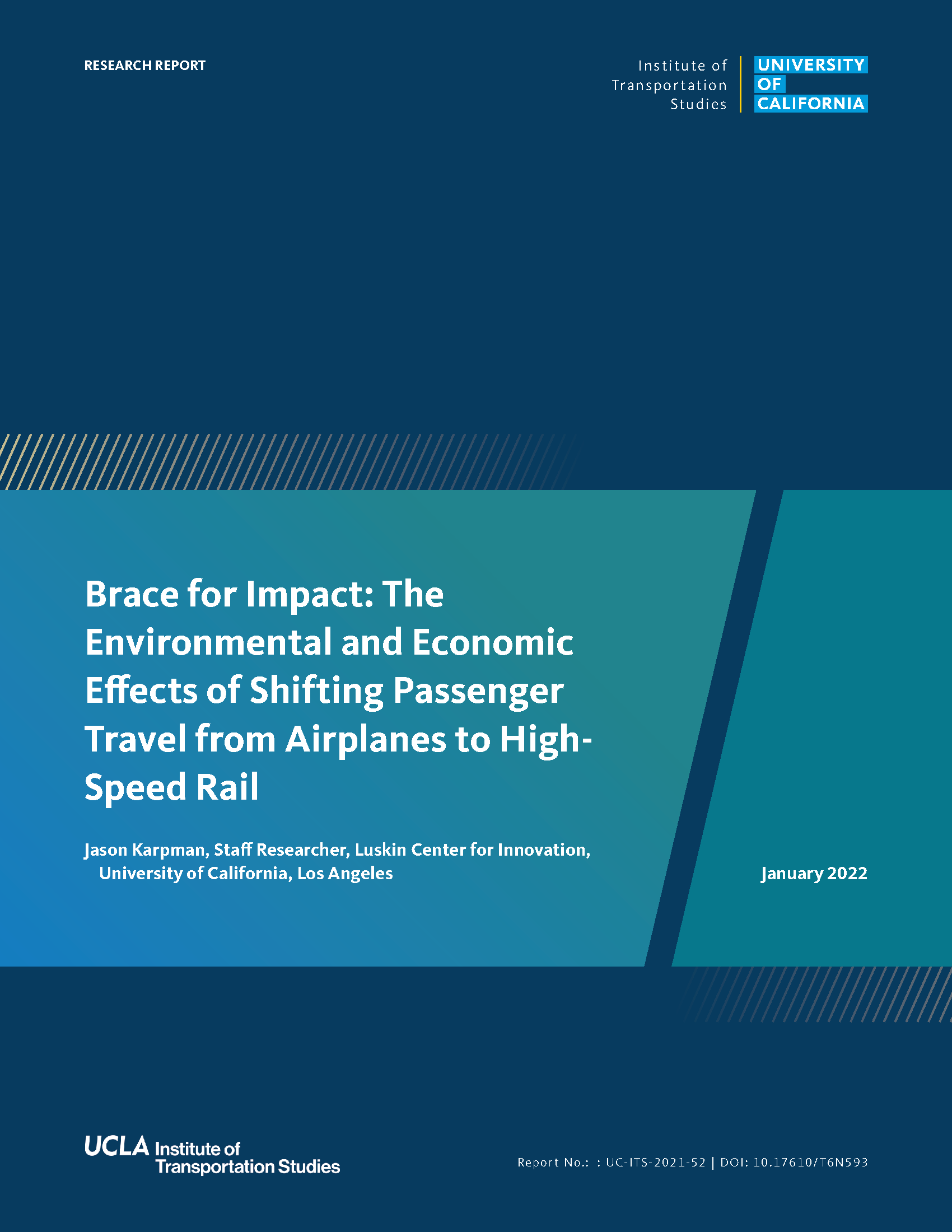Date: January 31, 2022
Author(s): Jason Karpman
Abstract
This research synthesis surveys recent literature from 2011 to 2020 on the environmental and economic effects of high-speed rail (HSR) projects from across the globe, with relevant lessons for implementation of the California High-Speed Rail (CAHSR) project. Recent literature shows that—under the right conditions—HSR can lead to both environmental and economic gains across a variety of metrics. To maximize environmental gains, HSR ridership needs to be high, energy propulsion must be powered largely by renewables, and displaced demand for intrastate air travel must not be replaced by longer-haul flights. For there to be economic gains, cities connected by HSR must play complementary roles, rather than competitive ones, within the economy. Otherwise, economic benefits will be consolidated in core cities along HSR routes at the expense of intermediate cities, and efficiencies from agglomeration may lead to an overall decline in employment and economic value added. This synthesis closes with some recommendations for future research questions that can inform the development or refinement of policies that support the successful implementation of CAHSR.
About the Project
Aviation is a difficult sector to decarbonize. The high energy and power requirements of flight make electrification challenging and low-carbon liquid fuels face their own technical and practical hurdles. While much of the attention on air transportation pertains to passenger travel, the relatively smaller air cargo industry faces similar challenges to decarbonization as the passenger airline industry. In the face of a difficult to decarbonize aviation sector, carbon savings may be realized by facilitating modal shifts from air transportation to less-polluting ground transportation where feasible. California’s effort to build a high-speed rail network for interregional travel in California is an example of such a strategy and features prominently in the state’s Scoping Plan as one pathway towards meeting 2050 GHG emissions reduction targets in the transportation sector. Luskin Center for Innovation researchers propose conducting an exhaustive search of the relevant peer reviewed and grey literature on studies that examine the economic and environmental effects of policies, programs, and projects aimed at shifting passenger and cargo movements from the air to the ground.


